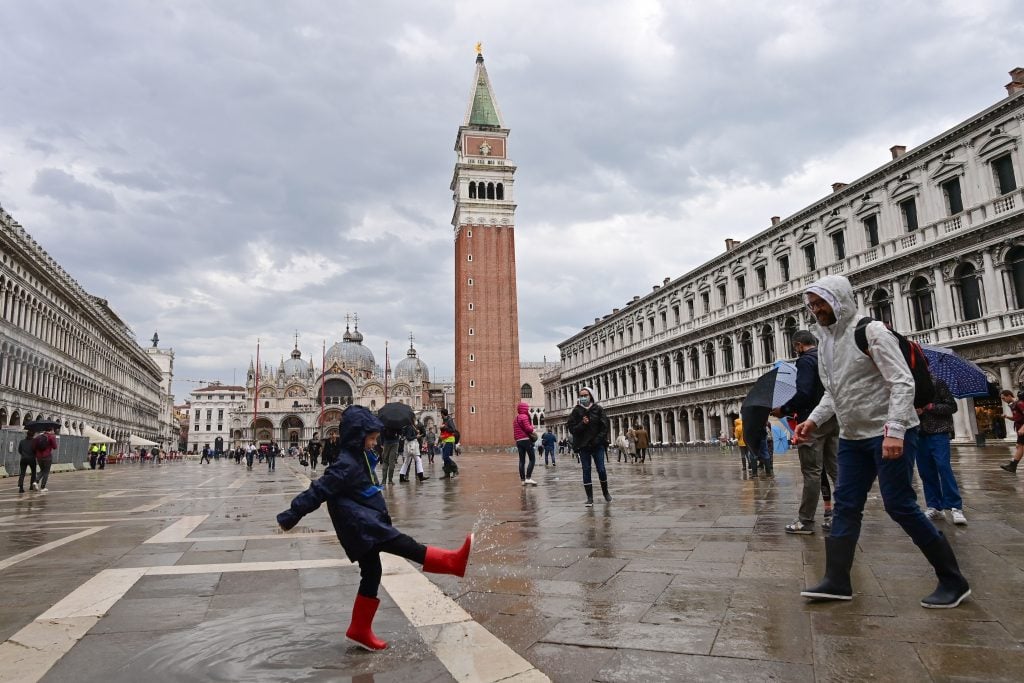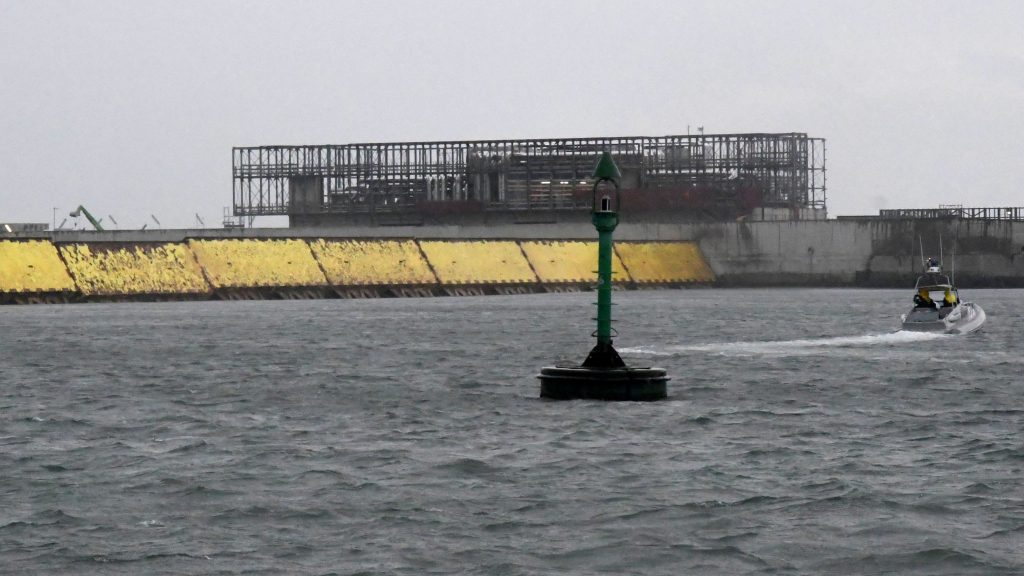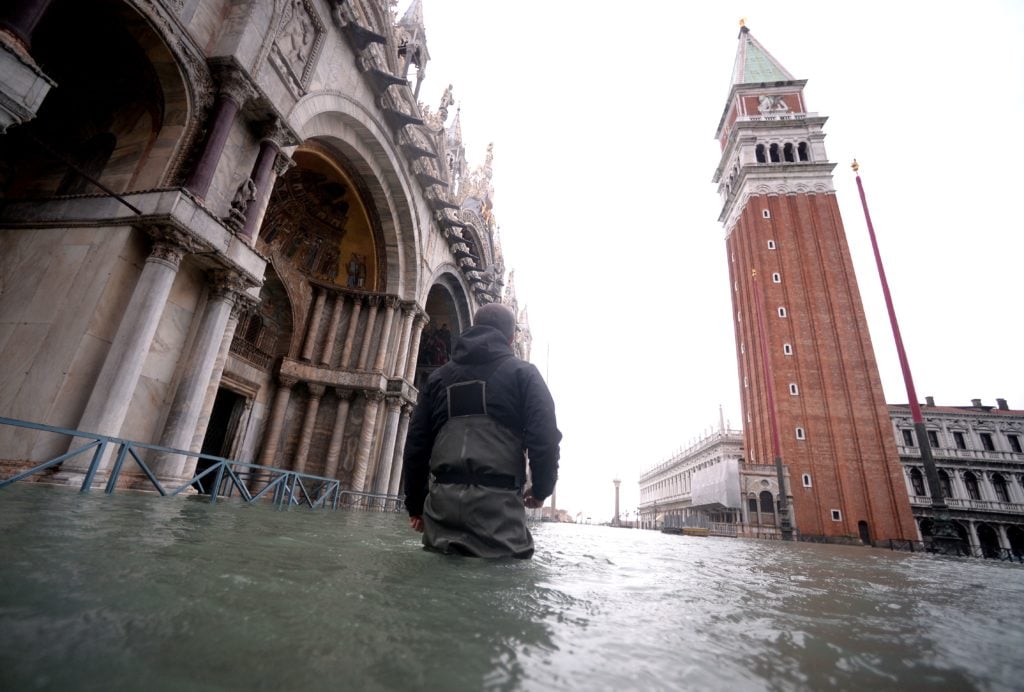Art World
Offering a Glimmer of Hope for Venice, the City’s New Flood Barriers Successfully Prevented a Deluge This Weekend
Venice deployed 78 flood barriers and staved off the rising waters of Acqua Alta.

Venice deployed 78 flood barriers and staved off the rising waters of Acqua Alta.

Sarah Cascone

This weekend marked a watershed moment for Venice—literally—as the city successfully deployed 78 flood barriers at the entrance of the Venetian lagoon and staved off the rising waters of Acqua Alta, the seasonal high tide that causes regular flooding between October and March.
Climate change and global warming have led to an increase in the frequency and severity of the Acqua Alta phenomenon, with the city experiencing its worst flooding in 50 years in 2019. (Despite flooding inside Venice’s regional council in November, the body simultaneously voted against measures to combat climate change.)
On Saturday, with the forecast predicting a 53-inch rise in water levels, Venetians were delighted to find just a few puddles in St. Mark’s Square, which normally floods at about a 35-inch increase.
The mobile gates cutting off the lagoon from the Adriatic Sea were built for the MOSE Project (or the Electromagnetic Experimental Module).

The mobile gates of the MOSE Experimental Electromechanical Module that protects the city of Venice from floods, at the Malamocco inlet off Venice’s Lido on October 3, 2020, during a high tide “Alta Acqua” phenomenon. Photo by Andrea Pattaro/AFP via Getty Images.
The gates were also successfully raised in July, but at low tide during good weather. The success of the MOSE project’s first big test is of crucial importance for the city’s future. In 2016, UNESCO, the United Nations’s cultural preservation branch, warned that Venice was Europe’s most endangered World Heritage site due to rising sea levels.
Many art museums have been forced to devise precautions to prevent rising waters from damaging collections.
It’s a concern that has plagued the lagoon city for decades: Venice first began work on a flood gate project in 1984, finally commencing construction in 2003. Originally set to be completed in 2011, MOSE’s progress has been slowed due to corruption and controversy.
The flood barriers have also proved hugely expensive, with costs projected to reach €7 billion ($9.5 billion) before work reaches completion, hopefully by the end of 2021.

A man walks in flooded St. Mark square in Venice, during “acqua alta” on November 17, 2019. Photo by FILIPPO MONTEFORTE/AFP via Getty Images.
That the barriers have finally been put to use is a source of disbelief for some Venetians. “It doesn’t seem true,” local shop owner Serena Nalon told CNN. “I was very skeptical—not least because they’ve spent so much money, without any result until now, so this morning I had minimal expectations. I was worried when I saw the tide predictions, then somewhere between incredulous and happy when it worked. You appreciate things more when you don’t expect it.”
Though MOSE will come as a relief, floods aren’t yet a thing of the past. Until the project is completed and its operation is turned over to the city, the barriers will only be put into effect when tides surpass 51 inches. That meant that Sunday, just 24 hours after the big test, St. Mark’s was once again under water as water levels rose 41 inches.